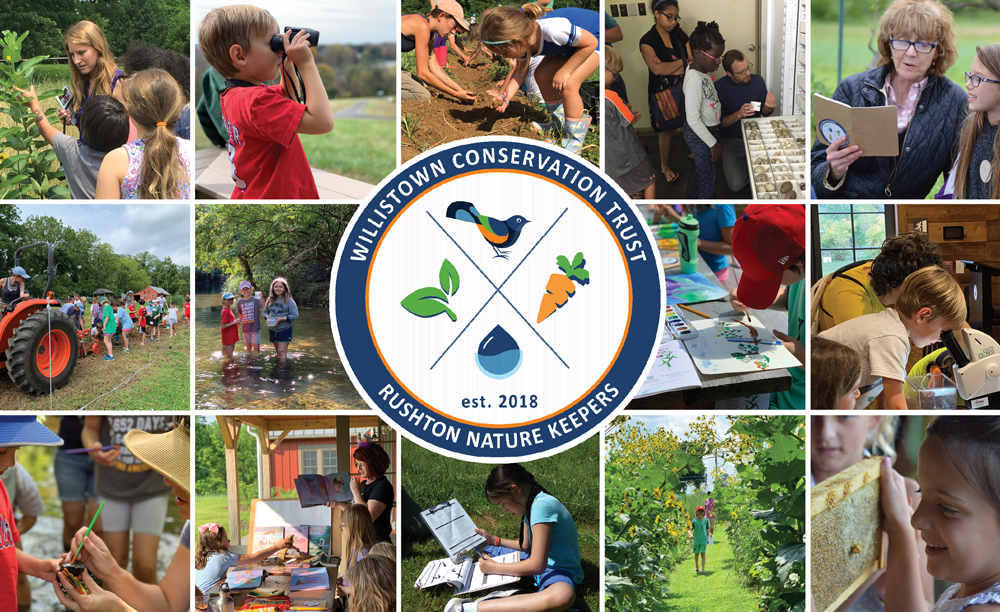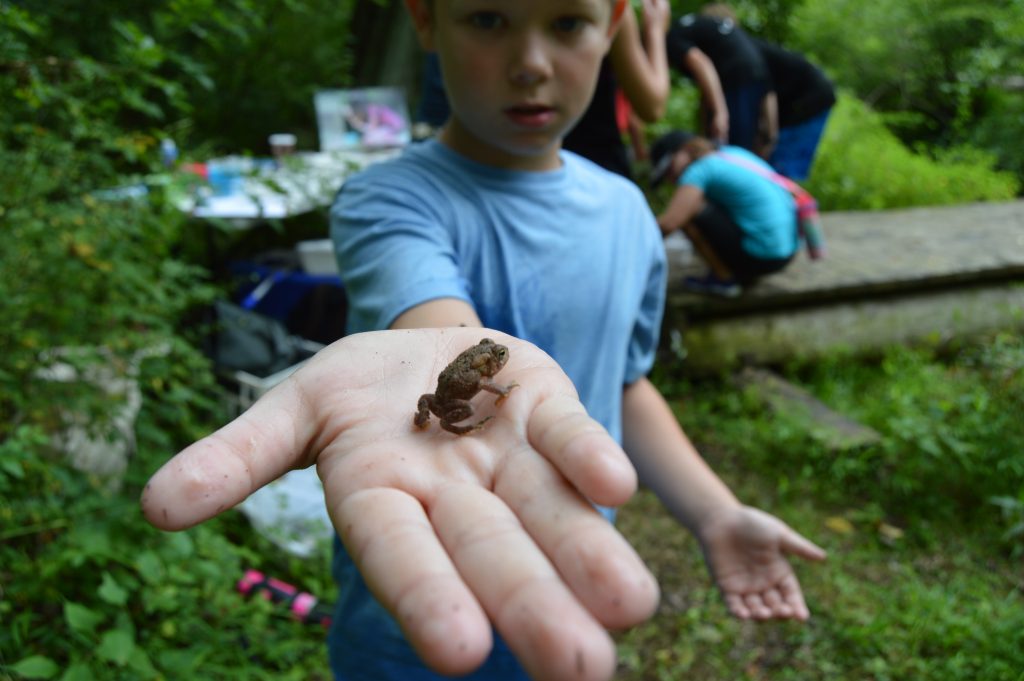
I first learned of this whimsical nature activity (building toad abodes) while I was living in the wilderness of Central Pennsylvania soon after college, training as an environmental education intern at Shaver’s Creek Environmental Center. Our soft-spoken instructor always took us through training activities as though we were children ourselves, which helped to get us in the mindset of seeing the world through the eyes of a child. Only in this mindset can you understand what makes these little people tick, what ignites their imagination, and what sparks those seemingly small moments to burn into their memories forever.
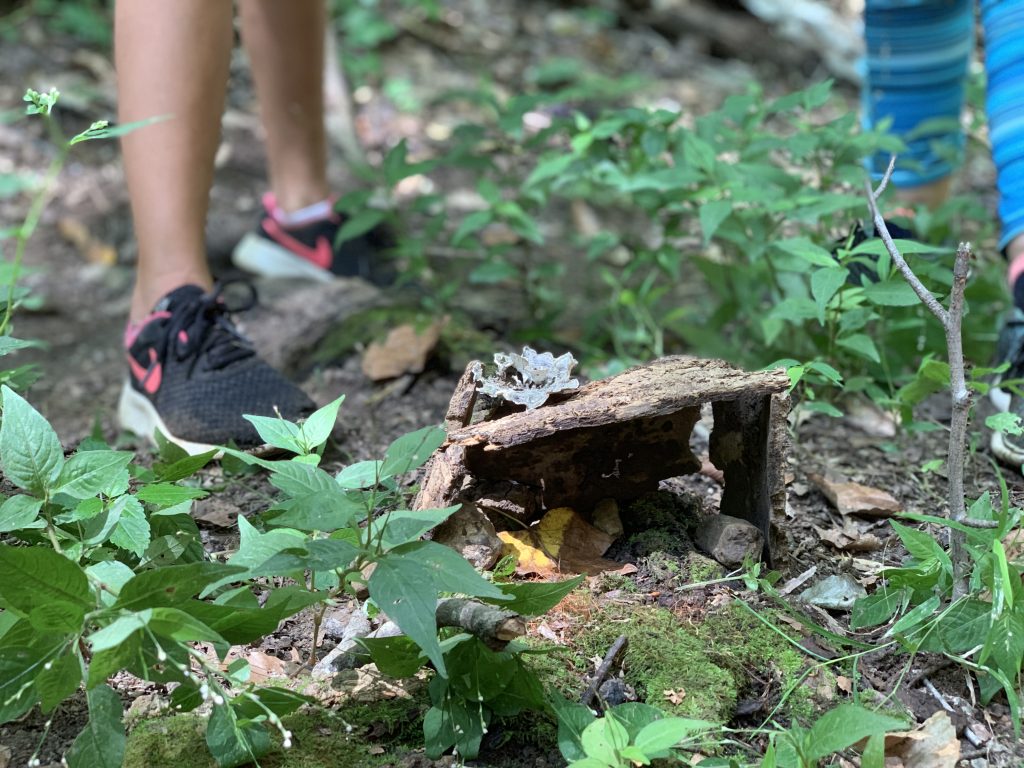
So there I was curiously scrambling and scuffling about the crisp brown bed of cool soil, fragrant dried needles, and damp green moss beneath the shade of the giant hemlocks . My fellow interns and I each worked our own patch of the forest floor, collecting bits of bark, twigs, pine cones, stones, and fallen leaves —anything that could be used to build the foundation of our own sturdy toad abode. Then came the interior design aspect because it only took a small stretch of the imagination to surmise that toads are discerning creatures with particular aesthetic tastes. A shimmering found butterfly wing might become a welcome doormat, or a fern frond might act as a cozy curtain.
As you can probably guess, a child can be entertained by this activity for quite a long time. And just as I look back fondly on that time with the forest floor of Central Pennsylvania, so too may your child remember their toad abode building fun. The best part about it is its simplicity; the core of this activity is really a tactile connection to nature. All you need is a patch of earth (in the woods, your yard, or a nature preserve) and a fertile imagination. The only rule is that you try to avoid picking mushrooms or plants from the earth. (Focus instead on items already at rest.)
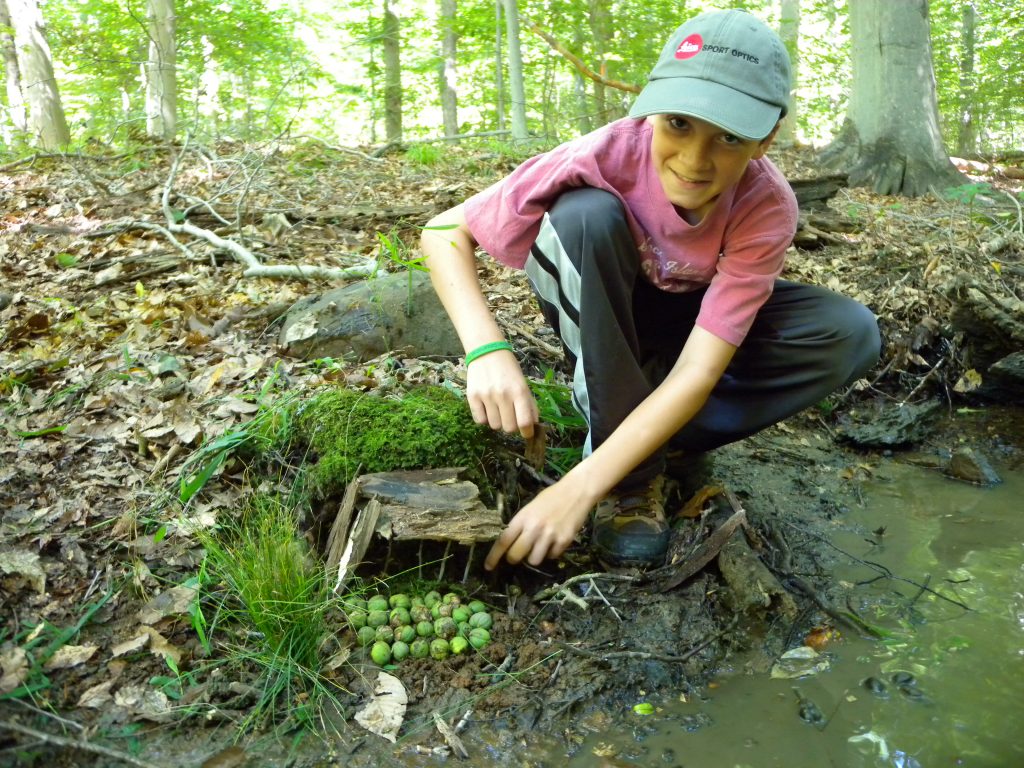
A Rushton Nature Keeper building a toad abode. Photo by Blake Goll
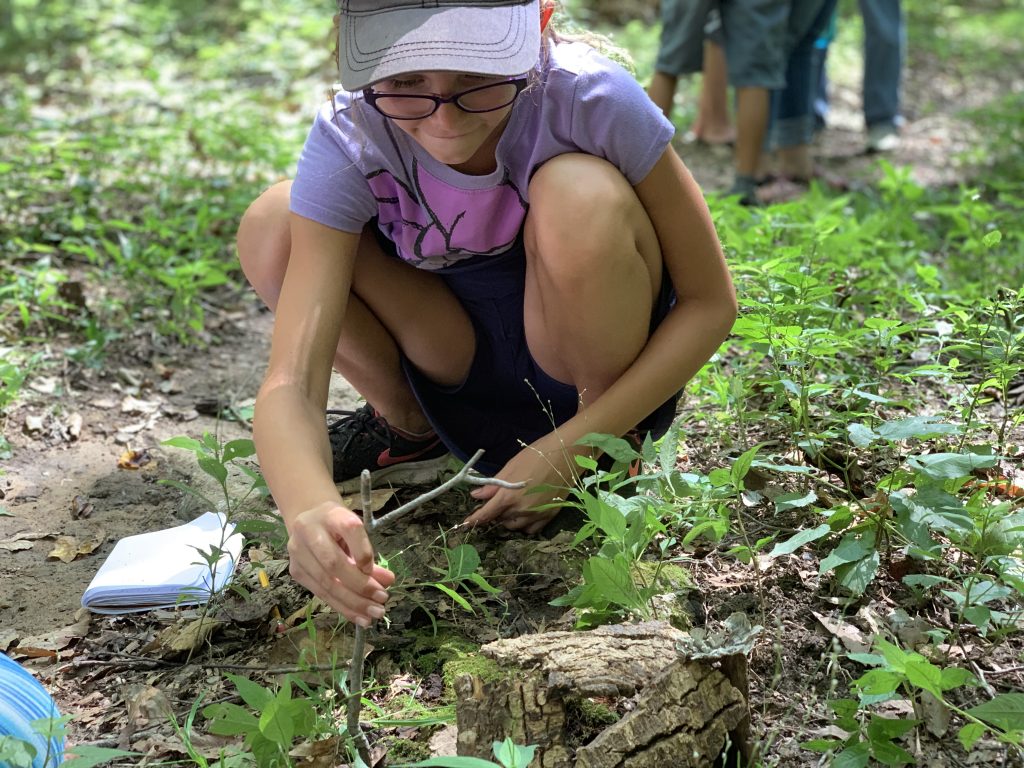
A Rushton Nature Keeper building a toad abode. Photo by Blake Goll
You can extend this activity from one simple toad abode to a whole village or even focus on houses for fairies instead of toads. The details are not important. This kind of free play in nature as a child is what fosters critical thinking, creativity, empathy, and mental health as adults. In doing something as simple as building a place for a toad to rest his head, a child is actually creating a healing space in his/her heart to return to as an adult.
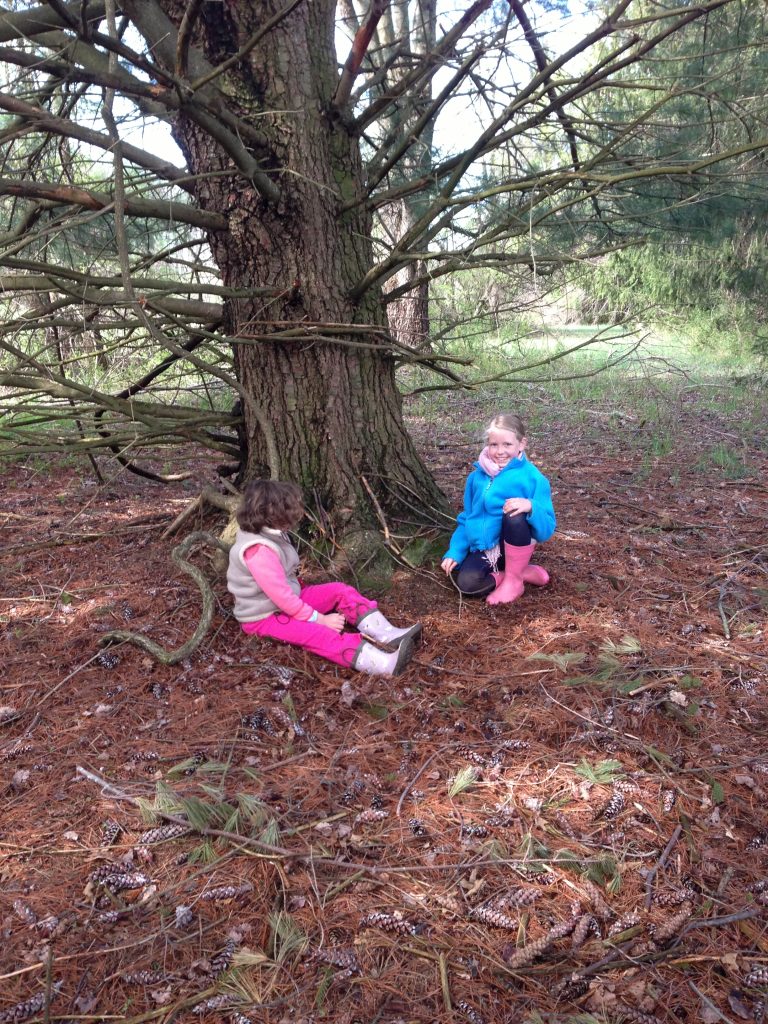
Rushton Nature Keepers
Blake manages our Rushton Nature Keepers (RNK) club for children ages 7-11. Through year-round programs covering four conservation themes (birds and wildlife, regenerative farming, healthy habitat, and watersheds), RNK provides children with unique opportunities to develop a meaningful life-long relationship with nature. Although things are subject to change regarding Covid-19, we plan to resume children’s activities on May 2nd. Click here for the schedule of RNK programs and membership information.
